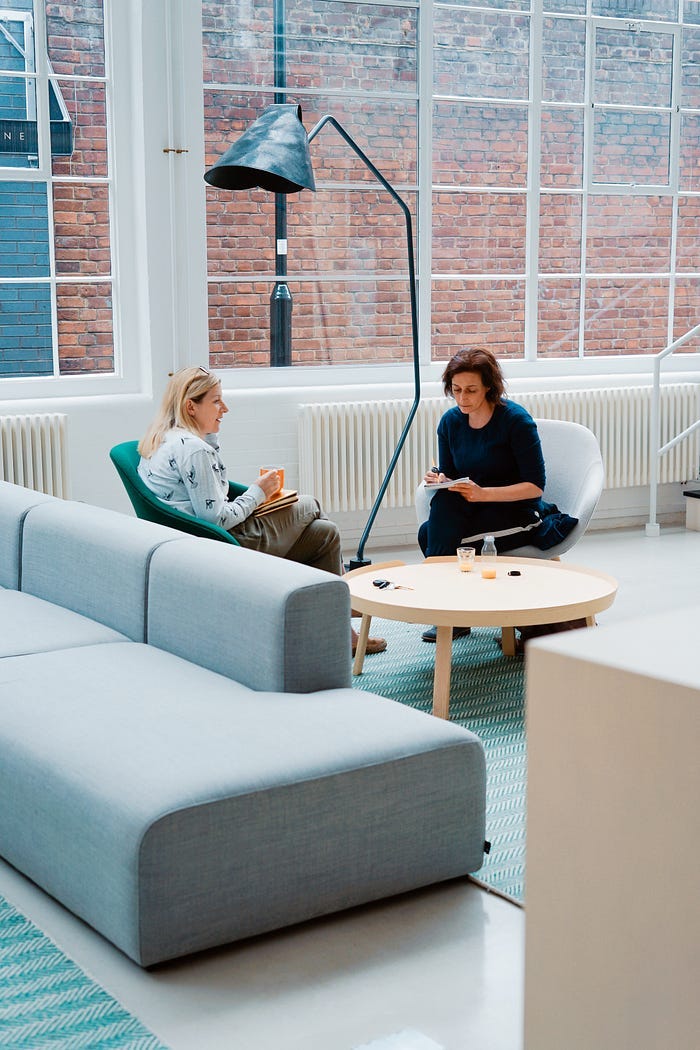“Hire character. Train skill.” — Peter Schutz
Having started as a freelance graphic designer in 2005 and having been involved in hiring other creative freelancers in the process, I see your pain. Some designers may look promising with kick-ass portfolio, but half the time, they don’t seem to interpret correctly what exactly you want them to design.
With the experience of being a designer myself, I realised the best way to hire the right person to fill in any creative position goes beyond just looking at one’s portfolio and talent.
As of writing, I am building and growing my design team to make sure our team can handle an influx of new customers while maintaining our service quality. Hence, I’ve documented a series of steps I have taken to find the right designers for the team.
I found success with a few designers on board and will be doubling down on the same steps to grow the team.
Here are the 9 steps:
1. Craft your values
Be crystal clear on your core values before hiring, at least create an honest list of what you stand for. It’s okay if your values change along the way. What’s important is you have a set of beliefs that sets you apart.

The right creative person to another company may not be right to you if your values don’t align. As Ray Dalio says,
What’s most important is determining whether you and they are working toward the same goals and can work in the same ways and share the same values.”
At MeetAnders, we believe we can train our designers. At the minimum, it’s a basic requirement that they need to know how to use the software we are using and an eye for design. But they don’t have to be world-class at such things because we believe these can be learned.
We also have in place a training system to upgrade a designer’s level in design, business and personal development. What we are looking for are designers with a world-class attitude and character who are willing to work hand-in-hand with our customers.
2. Vision
Question what they want to see themselves become in five years time. If they say they’ve never thought so far, that’s fine, because they’re being honest rather than just answering something for the sake of it.

Give them 10 minutes, get them to list the top 20 things they want in five years time which they’ve not achieved yet. Whether they are honest with what they list or not, this list has to resonate with your values, if it doesn’t, don’t hire them.
The good thing about this step is, there isn’t a politically correct answer. It’s either they fit your company vision or not. If they do, move on to the next, if they don’t you should consider not hiring them and let them know why.
Next, get them to tell you their plans to accomplish them. Be mindful that you are looking for answers that align your values as done in step one.
3. Life’s purpose and mindset
Find out what matters most to them and what they cannot live without. They may say money, family, children or pets. In my company, we look for designers with the curiosity to keep on growing and learning to be a better person, not just to be a better designer.

This allows us to understand their purpose in life and what their actions will be when they meet any challenge during their journey with us. We want to know if they have a bigger mission other than just getting paid to work.
In this step, we want to know how these candidates think when their work has been criticized. Do they perform worse in their next work? Do they hurl abuses and leave the customer waiting for their next response?
We also want to know if these candidates know the concept of giving value to customers or not. Will they take their own initiative to proactively serve the customers better or do they seem like they will try to do less for more.
4. Ideal candidate persona
Now, armed with your values and vision, create your ideal candidate. You may make sketches or write an essay, it’s entirely up to you. Make sure you create a persona of your creative candidate as ideal as you can. Here’s an example of my ideal candidate persona:

A 25-year-old female named Jenny. She is a mother of two and loves to windsurf as a hobby. She used to be on the volleyball team, was a captain of the team for two years. She started her professional career at an advertising agency as a graphic designer. For five years, she had to travel to the office by public transport.
Traffic is bad every day and travelling time takes more than two hours daily. As a mother, she wishes to have some flexible time to be with her children, yet also have the capacity to do something she loves that brings in some income. She wants to work from home or anywhere to give her this freedom and time.
Although she loves digital work, she also enjoys talking to people to bounce ideas and learn anything from each other.
5. Don’t just ask questions related to design
Avoid questions that are skill-based such as, “which software do you use best” or “what kind of work you do”. Try to ask questions beyond the software or their talent so that you can understand what’s their reason for being here.
At MeetAnders, we ask questions like “what do you aspire to be?”, “why us, not them?”, “what are your top 3 values in life, and why?”. We also go further than the topic of design to ask questions like “what books do you read?”.
Ask questions pertaining more about their life!
Go to the extent of giving them a problem scenario to find out what they will do to solve it. For example “say you’ve been toiling for nights and days over a design project and in the middle of it, a customer tells you they’ve decided to change designs, what would you say or do?”
Why do we ask such questions? The answers to these tell us a lot about how they are as a person.
We are essentially not hiring designers. We want to work with good human beings who will be kind to others when they can and value the purpose of personal development rather than just earning more money.
6. Social spy check
Search for their social profiles. You may have already been doing so at platforms like Dribbble, Instagram and Behance. In our case here, I don’t look for just pretty artwork done by them, but I look at what they describe themselves in their profiles and how consistent they put up their work.

Do they just say “hire me”? Do they mention how they will be helping you in a way that deserves your attention? Do they say things like “let’s work together to grow your company”?
These are just examples. My point is, their profiles tell us a lot about their mindsets and how we will enjoy working with them should we eventually hire them.
Next is to find out if what they say in their profile is indeed what they stand for by doing more research on them via the social network. What are they involved in? Do they participate in networks or groups to help them grow as a designer and as a person?
At the end of the day, what’s most important for us is to enjoy working with each other more than just churning out deliverables.
7. Budget
There’s a saying that goes: “If you pay peanuts, you’ll get peanuts”. That may be true but not a hundred per cent definitive. What you get also depends on what you think is a peanut.

What is considered peanuts to you may not be peanuts to others. For example, there was once when I was loaded with too many projects, I hired a few student designers, and to them, getting paid $8 is a luxury, while to me, it’s also a luxury because I was able to afford it based on the value I provide to the client for the client to pay me more than enough for me to hire these students to help.
It can be relative depending on the project on hand as well. The cost you have to fork out may or may not be within the so-called “market rate”. We shouldn’t hire based off of market rate alone, but our own budget to profit and also maintain good team culture.
8. Communication skills
If there’s any skill that a creative or designer cannot do without, I would say it’s their ability to communicate. You might think, does this mean you need to get someone sociable or talkative?

No, in fact, you may need someone more of the opposite. In this case, you need someone who listens more than they talk. Someone who listens and understand the needs of your clients and eventually translate that into the artwork to communicate the message.
In our case, we take communication as the ability to show empathy, rather than persuasion. We are looking for designers who are willing to listen with their hearts not because we say so, but because they care enough to do so.
For these designers, they understand that caring for the customers will help them learn better on what the customers need and hence they are able to create better work for them in a shorter time.
9. A series of trial projects
Start with a series of trial projects to understand your potential candidate better. You’ll want to make sure they have a strong work ethic to give you quality work even with a task that’s not straight forward to most people.

Don’t use this trial project to test their talent, but their tenacity to find creative solutions by setting up a few days of tests. I know of many creative professionals who are highly-talented but they hand in subpar or slipshod work. It’s not that they can’t do the work, it’s how they value these work versus money.
If these designers are only here for the money, they will do all they can during the trial to give their best. But once they get the job, they will tend to put less thought and effort to work on the design because it’s not a one-time thing.
In our company, each designer has to face at least 3 different design requests a day and at most 9 pieces every day. A talented designer may be able to churn out a beautiful and functional design, but if it’s just for the money, he or she may not have the heart to give their all for so many designs on a daily basis.
Hence with a series of tests set for a few days or weeks, I want to see that the effort made and eventual outcome match their talent. I’m not only looking at their style. So long their effort and talent align to show that they take pride to give their best all the time throughout a period of time, they will pass this test.
Ready to hire your next best designer?
You’ll never really know which type of candidate will land onboard your ship. But with your core values on hand as a guide and doing regular checks to keep track of what you stand for helps you gain more clarity in deciding who’s the best candidate to take on the creative work.





